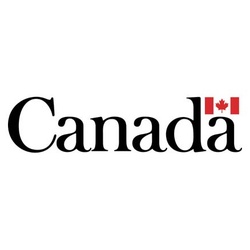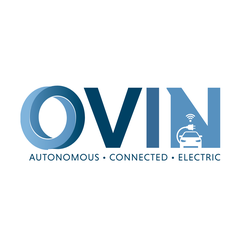Overview: Transportation funding opportunities in Ontario
Ontario transportation funding spans provincial and federal programs that invest in public transit, roads and bridges, electric vehicle charging infrastructure, fleet electrification, freight corridors, rail safety and shortlines, aviation and airport capital, marine and port facilities, and active transportation networks. Organizations can access cost-shared grants, non-repayable contributions, incentives, tax credits, and complementary financing for zero-emission buses and charging depots. Whether your priorities are municipal transit expansion, highway bridge rehabilitation, cycling infrastructure, or zero-emission truck incentives, this guide outlines how to navigate government funding for transportation in Ontario.
Why transportation grants matter
Transportation grants and funding in Ontario help municipalities modernize transit fleets, improve safety at rail crossings, upgrade airport runways, expand cycling networks, and deploy EV charging in communities and workplaces. Grants lower capital costs, accelerate timelines, and reduce risk for complex projects such as bus rapid transit, LRT extensions, intermodal terminals, port modernization, and trade corridor upgrades. Funding also supports clean transportation goals by enabling fleet decarbonization, hydrogen refuelling pilots, and zero-emission vehicle infrastructure that benefits residents, freight operators, and visitors.
What this directory covers
This resource summarizes Ontario transport grant programs and key federal streams relevant to Ontario applicants. It highlights public transit funding, road and bridge grants, EV charging grants, fleet electrification funding, trucking and logistics grants, rail funding including shortline rail grants, aviation and airport grants, marine and port funding, and active transportation funding. It explains eligibility, typical costs covered, stacking rules, and application steps to help organizations prepare competitive proposals.
Program landscape: Provincial and federal
Ontario organizations can combine provincial programs with federal streams to fund multi-phase projects. Most programs are competitive and cost-shared, while some municipal allocations use formula-based approaches.
Provincial programs most often used in Ontario
- EV ChargeON: Ontario EV ChargeON funding supports community charging stations and charging infrastructure Ontario funding across municipalities, Indigenous communities, and public sites. Typical projects include depot chargers grants for transit agencies, workplace charging grants, and MURB charging funding for multi-unit residential buildings.
- Gas Tax for Transit: Ontario Gas Tax for Transit provides municipal transit funding and operating support for transit based on a formula (ridership and population). This supports bus service, paratransit operations, and can underpin capital planning.
- Connecting Links: Connecting Links funding Ontario helps municipalities rehabilitate road and bridge segments that connect provincial highways through communities, including highway bridge rehabilitation grants and municipal road resurfacing funding.
- Ontario Community Infrastructure Fund (OCIF): OCIF provides municipal infrastructure funding Ontario transportation for roads, bridges, and stormwater/culvert funding for roads, supporting asset management and state-of-good-repair projects.
- Community and regional initiatives: Northern Ontario transportation funding may be available through regional development tools aligned with NOHFC transportation infrastructure and FedNor support for remote airports and winter roads, complementing municipal and Indigenous transportation projects funding.
Key federal programs relevant in Ontario
- Zero Emission Transit Fund (ZETF): Supports zero-emission bus funding Ontario, e-bus depot charging funding, and planning studies to replace diesel buses with electric or hydrogen vehicles. ZEB financing Ontario transit agencies can be complemented by the Canada Infrastructure Bank.
- Active Transportation Fund (ATF): Enables active transportation funding Ontario, including cycling infrastructure grants, bike parking funding, cycling network grants, and multi-use trail funding that improve safety and connectivity.
- Rural Transit Solutions Fund (RTSF): Provides rural transit funding Ontario for planning, capital, and innovation in on-demand transit grants, paratransit funding, and microtransit funding for smaller communities.
- Zero-Emission Vehicle Infrastructure Program (ZEVIP): Offers charging infrastructure Ontario funding for workplaces, fleets, public sites, and MURB, including charge point operator funding and corridor charging. Intake schedules vary; applicants should monitor ZEVIP Ontario intake timing.
- iZEV and iMHZEV incentives: Provide zero-emission vehicle funding for light-duty and heavy-duty vehicles, including iMHZEV truck incentives Ontario fleets 2025 for medium- and heavy-duty ZEVs.
- Green Freight Program: Supports freight efficiency via fleet assessment grants, truck/trailer retrofit funding, and fleet telematics grants Ontario, improving goods movement funding and last-mile logistics funding.
- National Trade Corridors Fund (NTCF): Invests in trade corridor grants, port and harbour infrastructure grants Ontario, intermodal terminal funding, corridor resiliency funding, and goods movement infrastructure across highways, rail, and marine.
- Airports Capital Assistance Program (ACAP): Provides airport capital assistance Ontario for safety-related projects at eligible regional airports, including airport runway rehabilitation funding, airport safety equipment funding, airfield lighting grants, airport wildlife control fencing grants, and airport de-icing equipment funding.
- Rail Safety Improvement Program (RSIP): Funds safety grants transportation Ontario for grade crossing safety funding, rail crossing safety upgrades, and grade separation funding to reduce collisions.
- Transport and port programs: Marine funding may support low-emission marine funding Ontario and ferry and marine crossing funding in specific corridors.
Innovation and pilots
- Ontario Vehicle Innovation Network (OVIN): OVIN grants pilot projects and mobility innovation grants Ontario SMEs enable smart mobility funding Ontario, autonomous shuttle pilot funding, cold-weather EV testing funding, and connected/automated vehicle pilots that integrate with transit and goods movement.
Benefits and impact of transportation funding
Economic, social, and environmental outcomes
Transport grants Ontario stimulate local economies by supporting construction, advanced manufacturing, and service supply chains for vehicles, charging, rail, and aviation. Grants improve road safety grants Ontario municipalities and Vision Zero funding Ontario outcomes through traffic calming funding and road signage safety funding. Clean transportation grants Ontario reduce emissions, enable fleet decarbonization grants, and improve air quality by replacing diesel with zero-emission buses, trucks, and ferries.
Benefits for different applicant types
- Municipalities and transit agencies: Access public transit capital funding, operating support for transit, municipal formula-based funding, and competitive application-based grants for bus fleet replacement funding, transit signal priority funding, first/last-mile transit grants Ontario, and LRT funding Ontario cities.
- Indigenous governments and organizations: Indigenous transportation funding Ontario supports community transit vehicles, winter roads and maintenance funding Ontario, and Indigenous community transit funding in Ontario 2025 to improve accessibility and safety.
- Airports and port authorities: Eligible for airport grants Ontario and port and harbour infrastructure grants Ontario that improve runway, apron, navigational aids, and berth facilities.
- Private companies and logistics operators: May access EV fleet grants Ontario, workplace charging, fleet telematics and safety tech funding Ontario, trucking company driver training grants Ontario, hydrogen trucks funding Ontario, and supply chain digitization transport funding Ontario.
Types of support and cost-sharing
Common funding mechanisms
- Non-repayable contributions and grants: Typically cover a percentage of eligible capital and soft costs for infrastructure grants.
- Cost-shared infrastructure funding: Federal and provincial programs frequently require municipal or private matching funds.
- Incentives and tax credits: iZEV/iMHZEV incentives subsidize vehicle purchases; shortline railway incentives and shortline rail tax credit Ontario may apply to rail maintenance and upgrades.
- Complementary financing: The Canada Infrastructure Bank EV charging financing and ZEB financing Ontario transit agencies can bridge remaining capital needs for e-bus fleets and depot charging.
Typical eligible costs
Eligible costs may include vehicle procurement (ZEBs, paratransit), charging and refuelling infrastructure, hydrogen refuelling funding Ontario equipment, design and engineering, grid upgrades, maintenance facilities, smart traffic signals funding, road weather sensors funding, rail grade separation, airport lighting and safety systems, and active mobility infrastructure.
Regional variations and local priorities
Urban and suburban regions
Urban transit funding Ontario supports bus rapid transit funding Ontario, LRT funding Ontario cities, GO Transit expansion funding keywords, transit station accessibility funding Ontario, and transit signal priority funding Ontario. Municipal transit expansion grants Ontario can integrate e-bus charging depots and first/last-mile solutions.
Rural and Northern Ontario
Rural transit funding Ontario assists on-demand transit, paratransit vehicles, and rural road rehabilitation grants. Northern Ontario transportation funding and NOHFC transportation infrastructure address remote access, winter maintenance, and snowmobile trail funding Northern Ontario that also supports tourism transportation infrastructure grants Ontario.
Indigenous communities
Indigenous transportation projects funding Ontario can support community transportation funding, accessible transit vehicle funding Ontario, road safety grants, winter roads, and ferry and marine crossing funding where geography requires.
Eligibility: Who can apply
Typical eligible applicants
- Municipalities, regional governments, and transit agencies seeking municipal transit funding Ontario or municipal infrastructure funding Ontario transportation.
- Indigenous communities and organizations.
- Public sector bodies (airports, ports, universities and colleges for campus mobility).
- Not-for-profit organizations engaged in transportation planning or active transportation.
- Private sector fleets, logistics companies, trucking firms, rail shortlines, airports with eligible structures, and charge point operators under ZEVIP or Green Freight.
Eligibility criteria snapshots
Programs assess project readiness, alignment with clean transportation goals, safety benefits, accessibility improvements, and corridor performance. Applicants must show community benefits, GHG reductions for zero-emission vehicle funding, safety outcomes for rail crossing safety upgrades, and asset management alignment for road rehabilitation grants.
How to apply for transportation grants in Ontario
Step-by-step process
1. Define scope and outcomes: Clarify whether the project targets transit funding Ontario, road and bridge grants, EV charging grants Ontario, or logistics grants Ontario.
2. Map programs and stacking: Identify compatible streams such as ZETF with ZEVIP, or Connecting Links with OCIF. Understand how to stack ZEVIP with provincial funding Ontario and municipal formula-based funding.
3. Build a costed plan: Prepare estimates for vehicles, EVSE grants (charging equipment), grid upgrades, smart traffic signals, grade separations, or airport safety equipment.
4. Develop the evidence base: Include ridership forecasts, safety audits, GHG modelling, accessibility benefits, corridor resiliency funding rationales, and equity outcomes.
5. Confirm matching funds: Secure council approvals, board resolutions, or corporate financing.
6. Prepare the application: Respond to eligibility, complete forms, attach engineering drawings, procurement plans, Indigenous engagement, environmental assessment status, and risk registers.
7. Submit and track: Monitor intake windows such as ZEVIP Ontario intake, RTSF Ontario intake dates, and deadlines for ChargeON Ontario intake 2025.
8. Deliver and report: Plan for milestone reporting, outcomes measurement, commissioning, and knowledge sharing.
Timelines and intakes
Many programs run periodic calls for proposals; others use rolling intakes. Applicants should align internal approvals with intake windows and provide shovel-ready documentation to increase competitiveness.
Budgeting, eligible costs, and procurement
Building a compliant budget
Include contingencies, inflation assumptions, and eligible categories such as design, permits, materials, vehicles, charging/refuelling, construction, commissioning, and training. For zero-emission bus funding Ontario, separate vehicle and charging line items and consider depot chargers grants, utility interconnection, and e-bus depot charging funding.
Procurement and contracting
Public entities typically follow procurement rules with competitive tenders, value-for-money analysis, and technology-neutral specifications. Private applicants should document competitive quotes, vendor qualifications, and total cost of ownership, especially for fleet electrification funding Ontario.
Sector snapshots and use cases
Public transit
- Bus fleet replacement funding Ontario and zero-emission bus funding Ontario for ZEB procurement, chargers, and depot upgrades.
- On-demand transit grants Ontario and paratransit funding to improve coverage and accessibility.
- Transit station accessibility funding Ontario, transit signal priority, and first/last-mile solutions.
Roads and bridges
- Highway bridge rehabilitation grants Ontario, municipal road resurfacing funding Ontario, stormwater/culvert funding for roads Ontario, and winter maintenance equipment grants Ontario for resilience.
EV charging and hydrogen refuelling
- EV charging grants Ontario via ZEVIP and EV ChargeON for communities, workplaces, and MURB; hydrogen refuelling funding Ontario for pilots, heavy-duty corridors, and hydrogen fleet pilot funding Ontario municipalities.
Freight and logistics
- Green Freight Program for fleet assessment grants, truck/trailer retrofit funding, fleet telematics grants Ontario, and last-mile freight pilot funding Ontario. Truck stop electrification funding Ontario highways and truck parking expansion funding Ontario improve operations.
Rail
- Rail funding Ontario for shortline rail grants, shortline bridge rehab funding Ontario, safety at rail crossings funding Ontario, grade separation funding, and shortline railway incentives.
Aviation and airports
- Airport capital assistance Ontario for runway and lighting rehabilitation, safety equipment, and apron upgrades; regional airport funding Ontario for asset protection and operations.
Marine and ports
- Port and harbour infrastructure grants Ontario, intermodal terminal funding Ontario, port modernization funding Ontario, and low-emission marine funding Ontario for shoreside power and equipment.
Active transportation
- Cycling infrastructure grants Ontario, cycling network grants Ontario, bike parking funding Ontario, multi-use trail funding Ontario, and traffic calming funding Ontario to support Vision Zero and safe routes to school.
Stacking, matching, and risk management
Funding stacks
Projects may combine ZETF for vehicles, ZEVIP for charging, and municipal sources. For road and bridge projects, Connecting Links and OCIF can complement federal trade and corridor funds where eligible. Applicants should document non-duplication and maintain audit-ready records.
Risk and compliance
Mitigate delivery risks with detailed schedules, utility coordination for charging infrastructure Ontario funding, environmental permits, and procurement planning. Establish KPIs for emissions, safety, accessibility, and goods movement performance, and align with program reporting templates.
Measuring outcomes and reporting
Define baseline and target metrics for GHG reductions, collision rates at grade crossings, transit ridership, cycling mode share, and corridor throughput. Use telematics and smart sensors to validate outcomes and support program audits.
Inclusivity, accessibility, and equity
Transportation funding in Ontario prioritizes inclusive mobility: accessible transit vehicle funding Ontario, transit station accessibility, wheelchair-accessible taxi funding Ontario, and community transportation funding that reaches seniors, youth, and persons with disabilities. Projects in Northern Ontario and Indigenous communities can emphasize affordability, reliability, and year-round access.
How experts can support your application
Preparing competitive proposals demands technical, financial, and regulatory expertise. Experts can help align scope with Ontario transport grant programs, structure cost-shared budgets, model GHG reductions, plan depot power upgrades, and coordinate multi-agency submissions. helloDarwin connects organizations to consulting expertise and a SaaS platform that simplifies discovery, eligibility checks, and tracking across transportation funding Ontario streams.
Conclusion: Turning plans into funded projects
Ontario offers a robust mix of transport grants Ontario for transit, roads, EV charging, fleet electrification, rail, airports, ports, and active transportation. By understanding eligibility, building a strong evidence base, and aligning timelines with intakes, applicants can secure government funding for transportation Ontario and deliver safer, cleaner, and more efficient mobility. With the right planning and expert support, projects move from concept to construction and long-term operations.
























